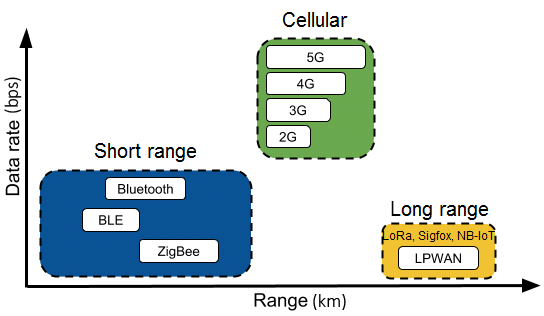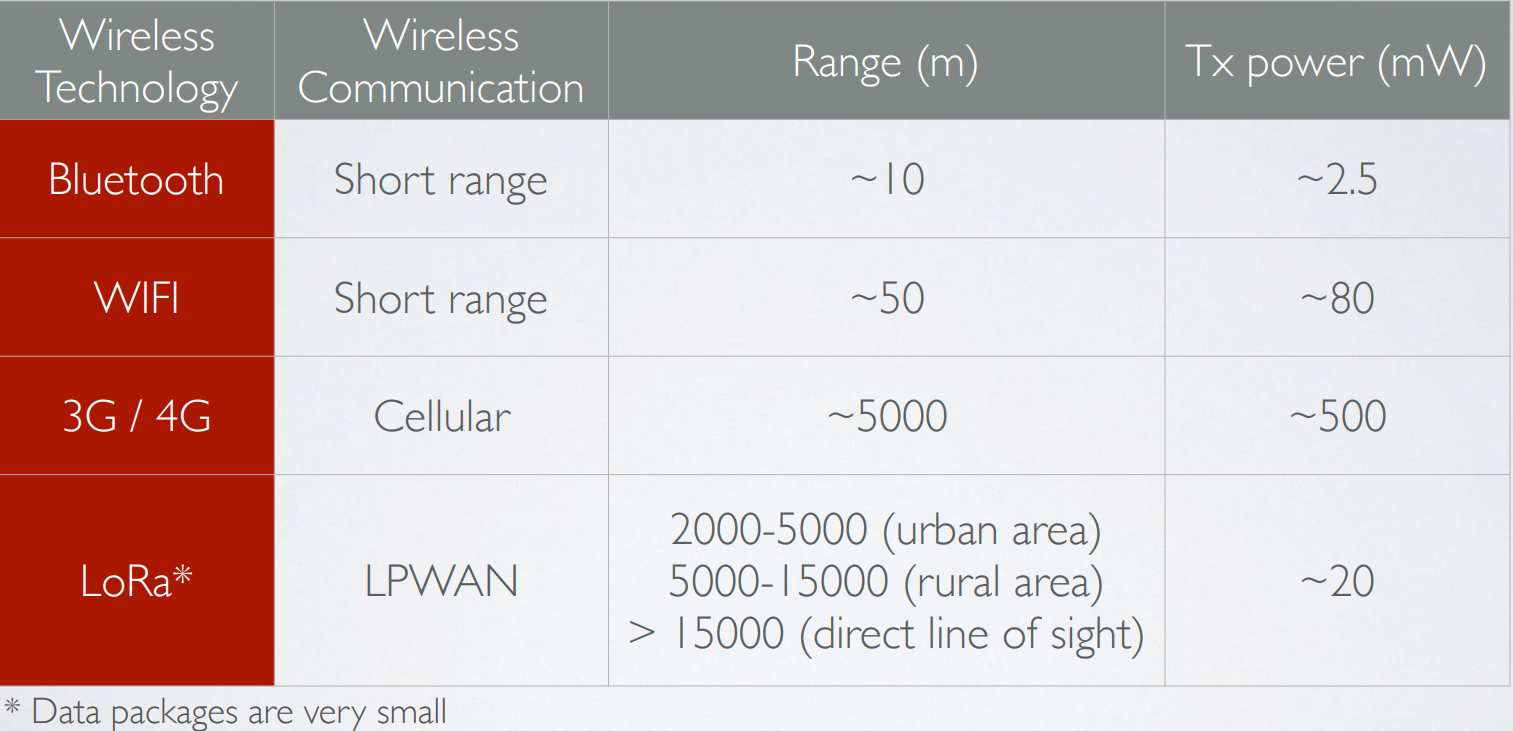LPWAN stands for Low Power Wide Area Network and this type of wireless communication is designed for sending small data packages over long distances, operating on a battery. There are several competing technologies in the LPWAN space such as Narrowband IoT (NB-IoT), Sigfox, LoRa and others.
LPWAN is not a single technology, but a group of various low-power, wide area network technologies that take many shapes and forms. LPWANs can use licensed or unlicensed frequencies and include proprietary or open standard options.
The proprietary, unlicensed Sigfox is one of the most widely deployed LPWANs today. Running over a public network in the 868 MHz or 902 MHz bands, the ultra-narrowband technology only allows a single operator per country. While it can deliver messages over distances of 30-50 km in rural areas, 3-10 km in urban settings and up to 1,000 km in line-of-site applications, its packet size is limited to 150 messages of 12 bytes per day. Downlink packets are smaller, limited to four messages of 8 bytes per day. Sending data back to endpoints can also be prone to interference.
Random phase multiple access, or RPMA, is a proprietary LPWAN from Ingenu Inc. Though it has a shorter range (up to 50 km line of sight and with 5-10 km nonline of sight), it offers better bidirectional communication than Sigfox. However, because it runs in the 2.4 GHz spectrum, it is prone to interference from Wi-Fi, Bluetooth and physical structures. It also typically has higher power consumption than other LPWAN options.
The unlicensed LoRa, specified and backed by the LoRa Alliance, transmits in several sub-gigahertz frequencies, making it less prone to interference. A derivative of chirp spread spectrum (CSS) modulation, LoRa allows users to define packet size. While open source, the underlying transceiver chip used to implement LoRa is only available from Semtech Corporation, the company behind the technology. LoRaWAN is the media access control (MAC) layer protocol that manages communication between LPWAN devices and gateways.
Weightless SIG has developed three LPWAN standards: The unidirectional Weightless-N, bidirectional Weightless-P and Weightless-W, which is also bidirectional and runs off of unused TV spectrum. Weightless-N and Weightless-P are often more popular options due to Weightless-W’s shorter battery life. Weightless-N and Weightless-P run in the sub-1 GHz unlicensed spectrum but also support licensed spectrum operation using 12.5 kHz narrowband technology.
Narrowband-IoT (NB-IoT) and LTE-M are both 3rd Generation Partnership Project (3GPP) standards that operate on the licensed spectrum. While they have similar performance to other standards, they operate on existing cellular infrastructure, allowing service providers to quickly add cellular IoT connectivity to their service portfolios.
NB-IoT, also known as CAT-NB1, operates on existing LTE and Global System for Mobile (GSM) infrastructure. It offers uplink and downlink rates of around 200 Kbps, using only 200 kHz of available bandwidth.
LTE-M, also known as CAT-M1, offers higher bandwidth than NB-IoT, and the highest bandwidth of any LPWAN technology.
Wireless communication comparison

